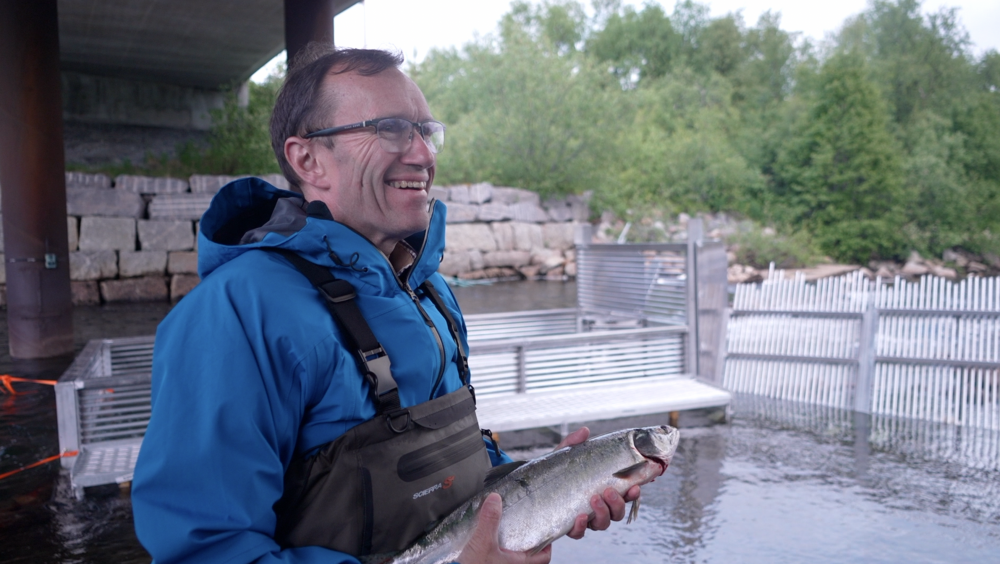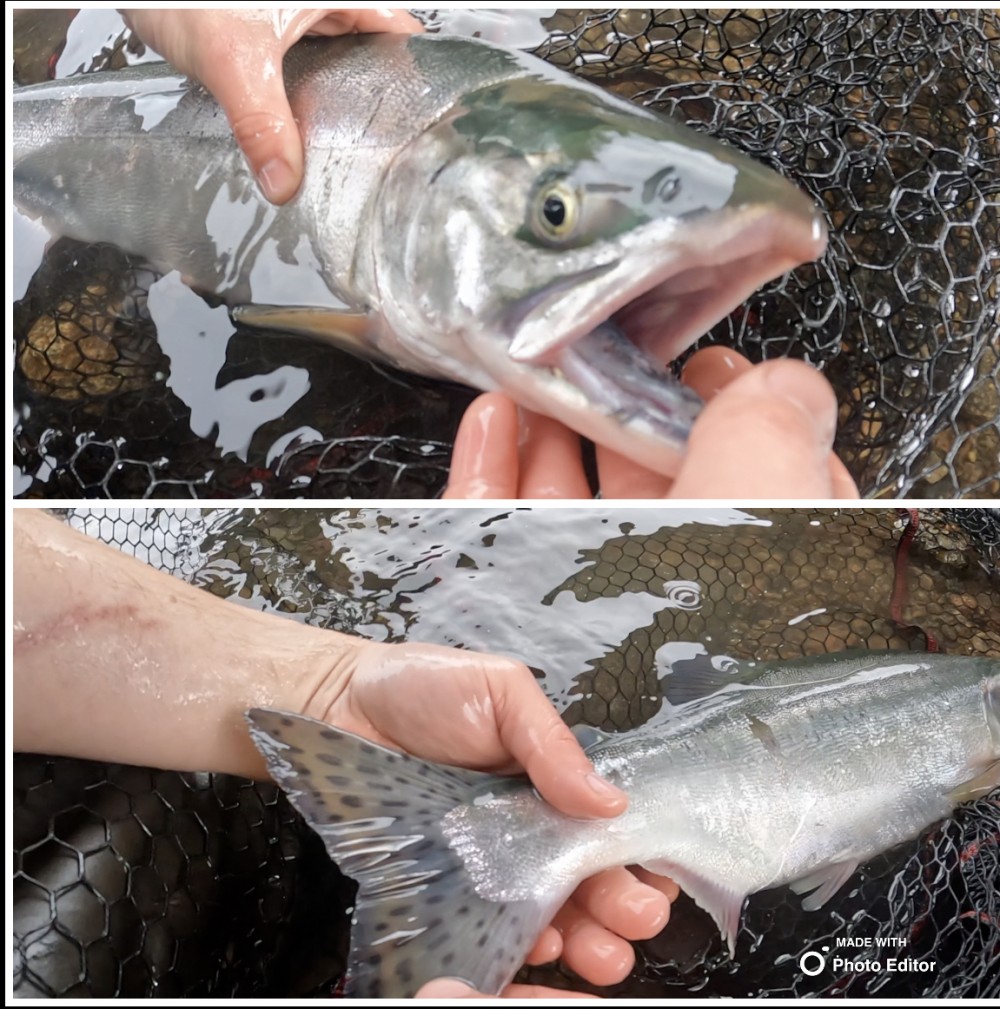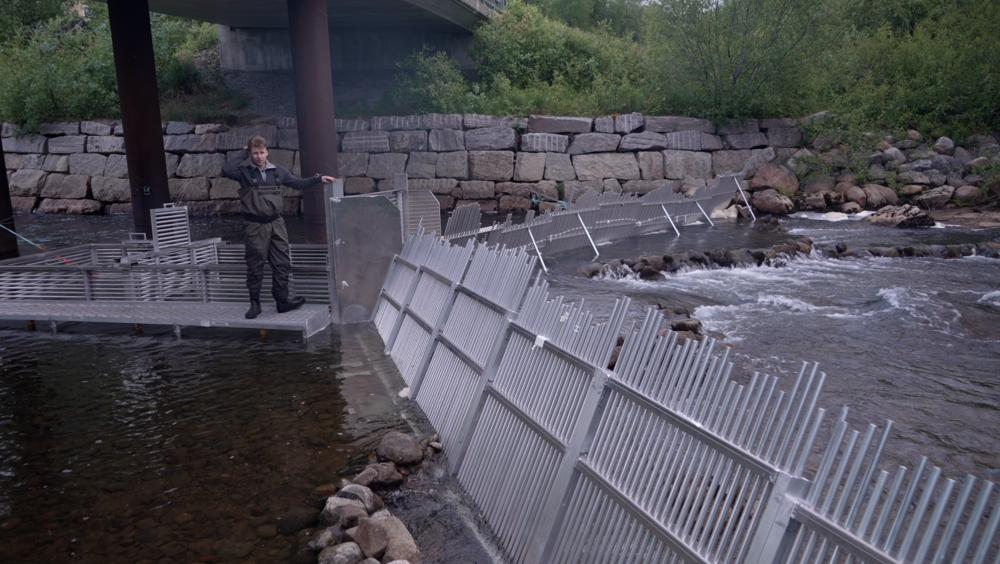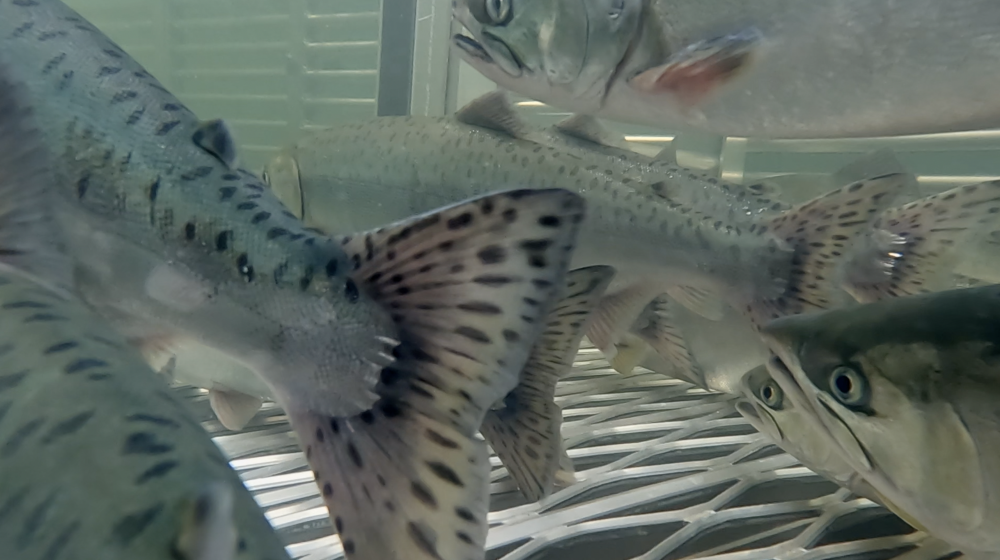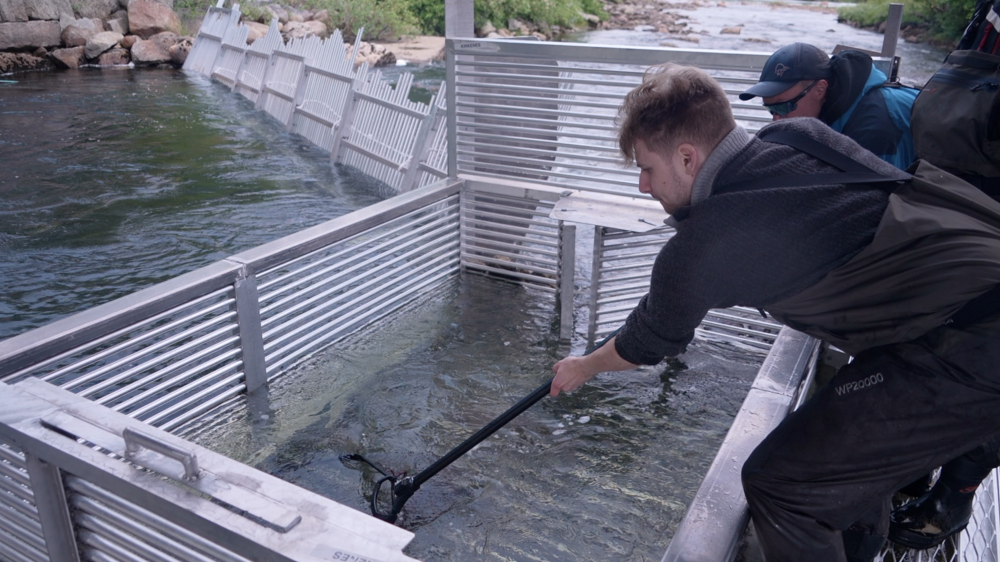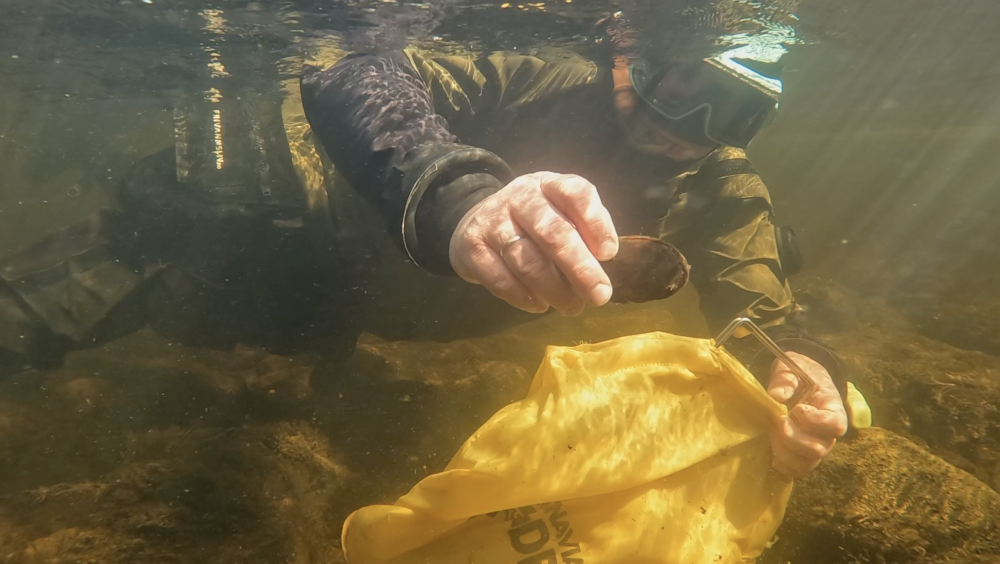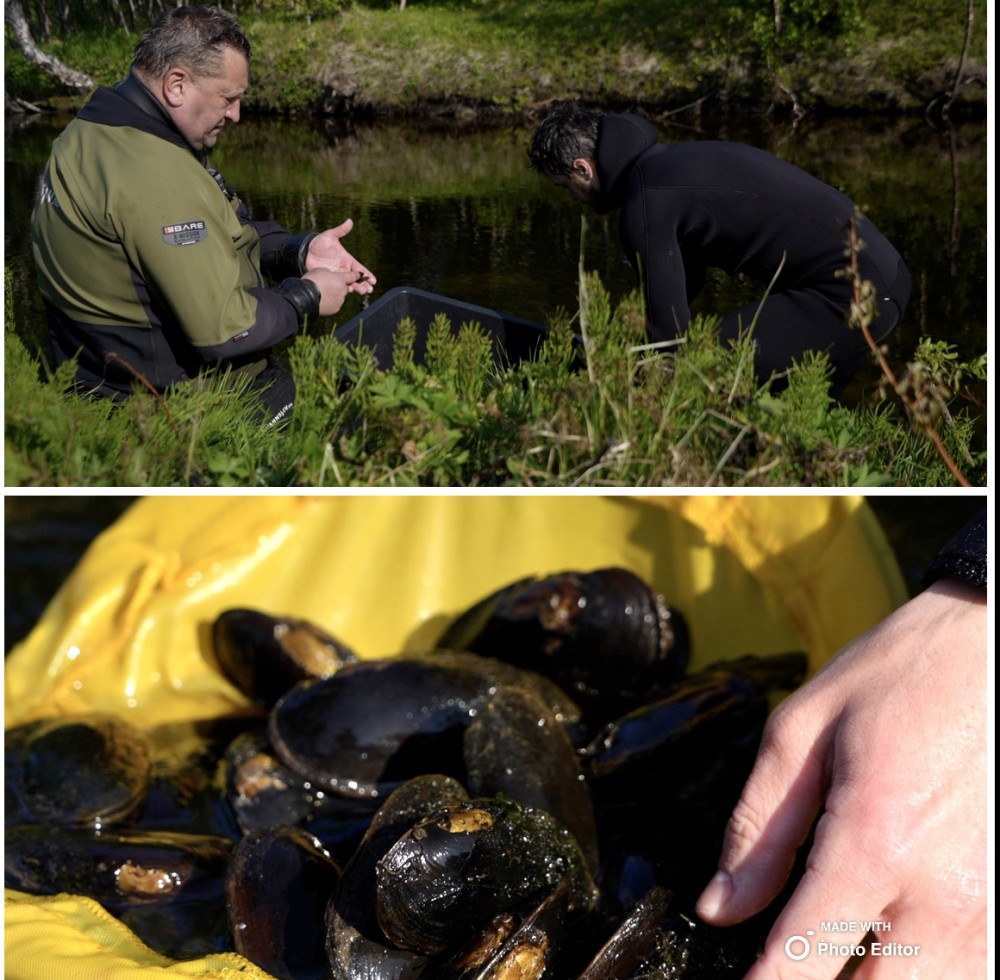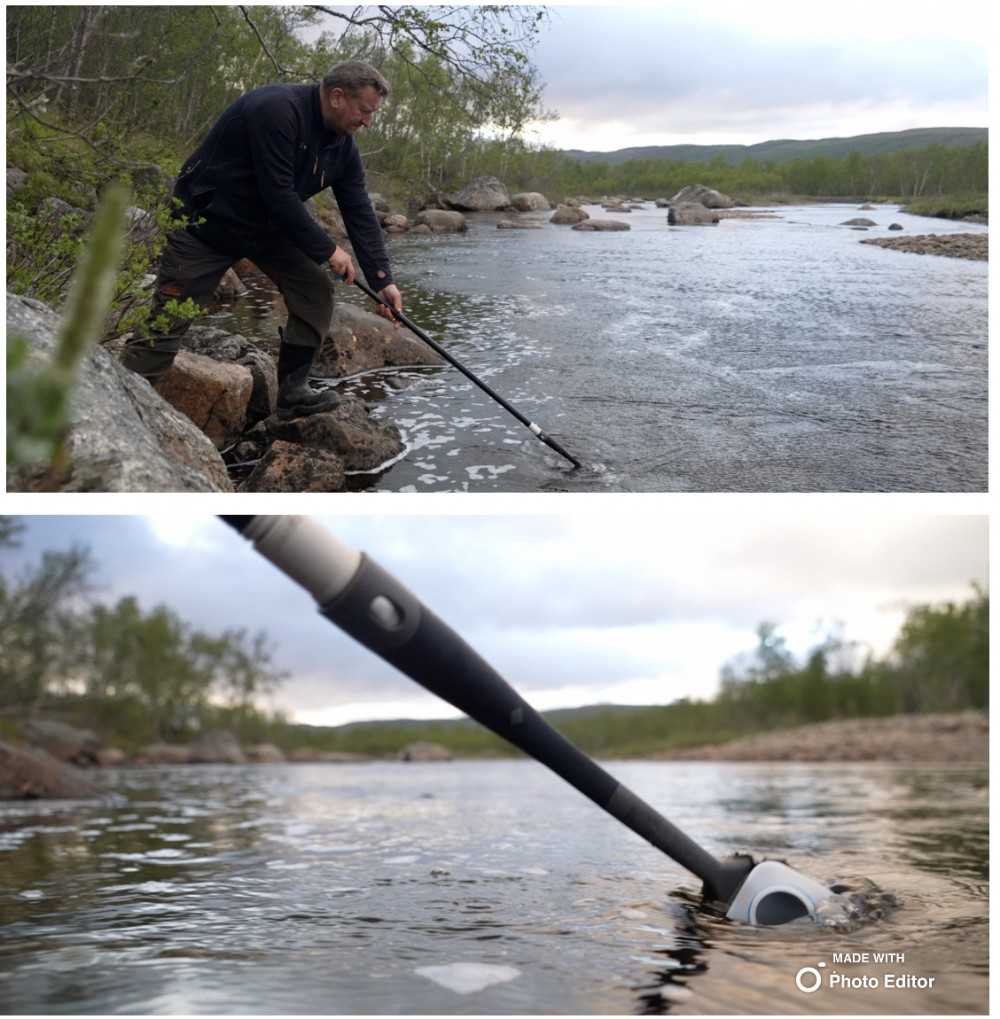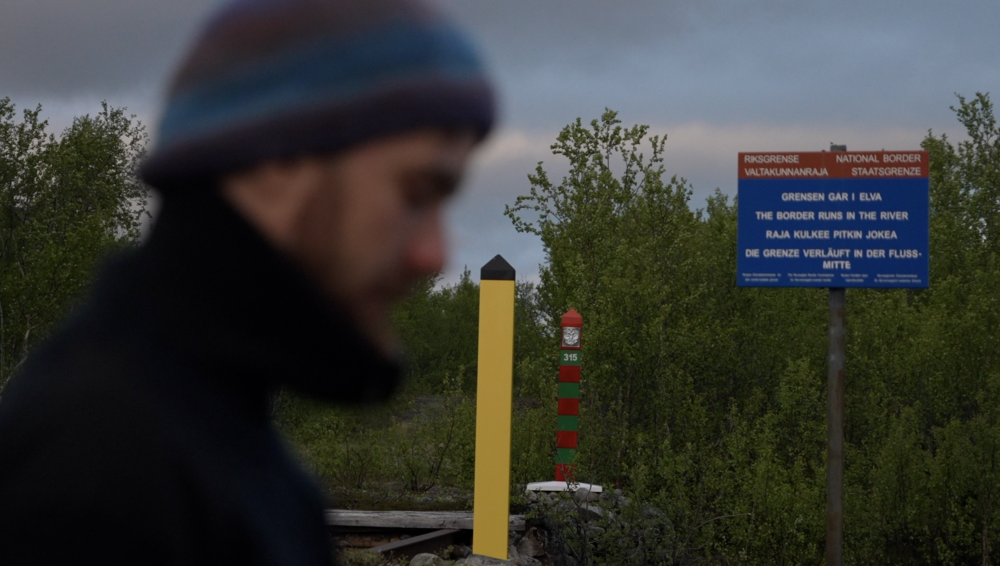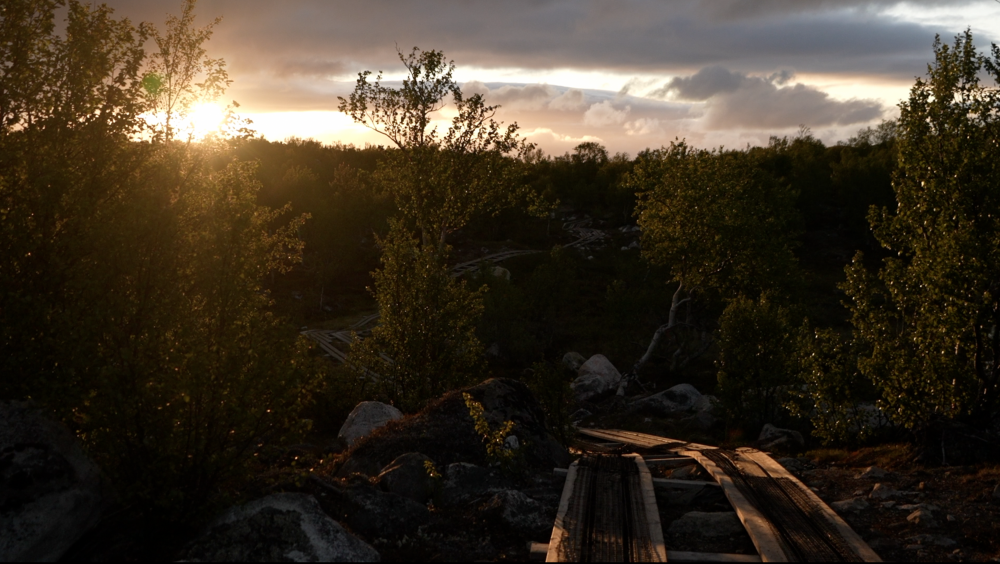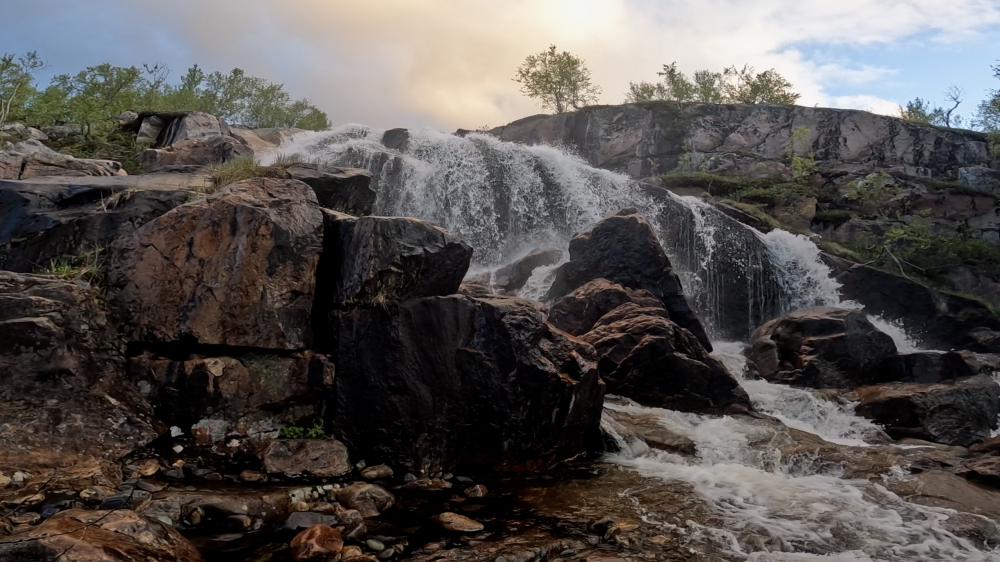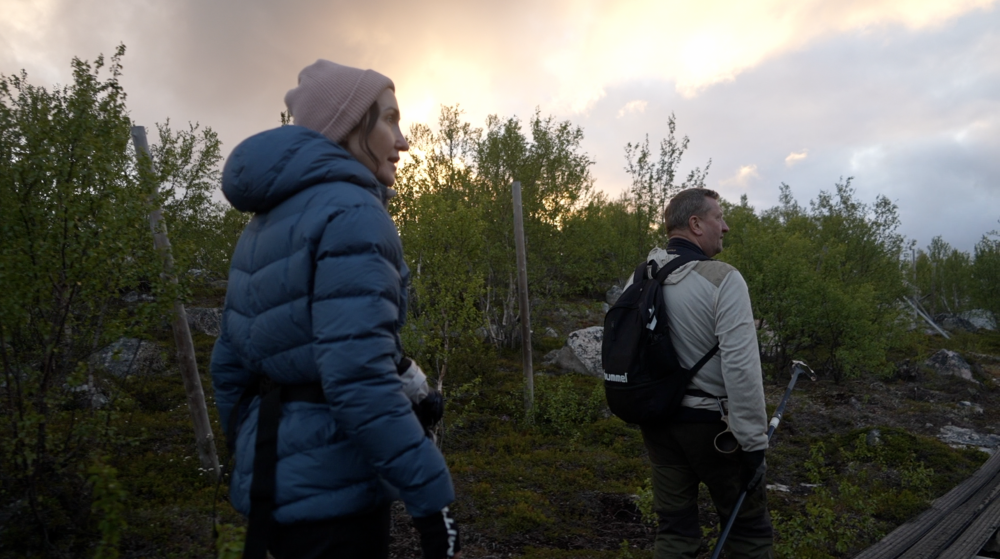Video Report: “We have declared a war on Pink salmon” Norway fights the invasive species in the Arctic
Traps are being set up all over Finnmark rivers to limit the invasion of this Atlantic salmon rival.
Enemy number one
“We have declared a war on this invading species,” Norway’s Minister of Climate and Environment Espen Barth Eide tells me holding a Pink salmon in his hands. The fish was caught in a trap installed in the river Munkelva, not far from the border with Russia in Arctic Norway.
“This invasion comes every second year and every second year there has been more of the Pink salmon”, Minister Eide tells me and adds that the government has more than doubled its economic contribution to build such traps all over the northern region.
The Pink salmon, or the so-called ‘Russian’ salmon or ‘pukkellaks’, has become for many Norwegian fishermen enemy number one.
“Pink salmon is increasing the risk for the Atlantic salmon. They conquer areas, they stress the Atlantic salmon”, Paul Eric Aspholm, a scientist from The Norwegian Institute of Bioeconomy Research (NIBIO), tells me.
Originally from rivers draining into the Pacific Ocean, millions of Pink salmon were released into rivers on the Russian Kola peninsula during the 1950s. While now in Russia Pink Salmon, or “Gorbusha”, is a valuable resource, for the mighty Norwegian rivers across the border it’s a threat.
The fish come in huge numbers and after spawning in the local rivers, die. As a result, thousands of these rotting fish end up polluting the rivers, Knut-Harald Reite, the Munkelva trap’s operator explains to me, standing on the trap’s site of the Munkelva River.
Furthermore, Pink salmon also compete for resources with the Atlantic salmon – a species that’s already considered endangered in Norway.
“This trap is like a border control”, Knut-Harald Reite laughs. “They come to these checkpoints and then we pick out the ones that don’t have a passport”. Caught in the trap’s chambers, the Pink salmon and Atlantic salmon are separated – the unwanted salmon are taken out with nets, but the precious Atlantic salmon are released to swim further upstream.
“Climate change helps Pink salmon”
The NIBIO scientist, Paul Eric Aspholm, puts on his double-layered diving suit and dives to gather mussels from the Karpelva River in order to prepare the ground for yet another Pink salmon trap. He collects the mussels from the river bed so they are not broken by worker’s boots.
“Mussels in the river mean this is a very healthy river. We gather them and afterwards release them a few meters away”, Paul tells me, adding that the Pink salmon is also one of the reasons there are fewer such mussels.
“Water in this river here has warmed about one or one and a half degrees every tenth year during the last twenty years. Climate change is connected to the Pink salmon’s success because it survives in the warmer waters, meanwhile Atlantic salmon needs cold waters,” Paul says.
The quality of water
Norwegian scientists are concerned not only about the temperature of the water, but also about the water quality in these rivers later in the autumn. The rotting carcasses of the Pink salmon could be harmful to the eggs of the Atlantic salmon.
That’s why Paul and his assistant David Kniha will spend the summer regularly driving to gather water samples at several locations to monitor water conditions.
I joined one of their sampling trips along the river Grense Jakobselv. The Arctic’s midnight sun allows them to gather samples up until 4 am. Each bottle they collected was carefully numbered and registered.
To get a sample, Paul dives a bottle into the water – the border between Russia and Norway follows right along the middle of this river. A green-red post marking Russia’s territory is just meters away.
“During the Pink salmon season we sample the water every week to see how this is changing through the season until frost is coming and ice is putting the lid on the river,” Paul says. “Then we will continue the next year again to see how the water is influenced by the rotting Pink salmon carcasses that are left during winter and continue to rot in the spring”.
Are these traps an effective way to control the Pink salmon population? Norwegian scientists and fishermen will find out at the end of the summer.
Located in Kirkenes, Norway, just a few kilometres from the borders to Russia and Finland, the Barents Observer is dedicated to cross-border journalism in Scandinavia, Russia and the wider Arctic.
As a non-profit stock company that is fully owned by its reporters, its editorial decisions are free of regional, national or private-sector influence. It has been a partner to ABJ and its predecessors since 2016.
You can read the original here.
